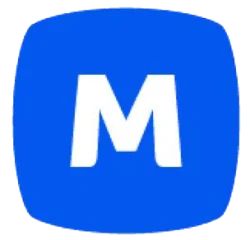1.1 Introduction
The patient monitoring is a very critical monitoring system, it can monitor physiological signals including electrocardiograph (ECG), Respiration Rate, Invasive and Non-Invasive Blood Pressure, Oxygen Saturation in Human Blood (SpO2), Body Temperature and other Gases etc. During patient treatment, the PMS is to monitor continuously vital physiological signs of the patient. It is quite hard job for medical personnel to monitor each patient for 24 hours. Cost reduction pressures and the need for shortened in-patient stays are promoting the use of wireless patient monitoring systems in hospitals. Their contribution to better process management, superior flexibility and increased efficiency within hospitals is further underlining the appeal of wireless networking options for patient monitoring systems. During treatment, it is highly important to continuously monitor the vital physiological signs of the patient. Therefore, patient monitoring systems has always been occupying a very important position in the field of medical devices. The continuous improvement of technologies not only helps us transmit the vital physiological signs to the medical personnel but also simplifies the measurement and as a result raises the monitoring efficiency of patients (Edan, 2009).
As a prelude to other parts of this study, this chapter will discuss the background upon which this study was initiated, the statement of problems that led to this study, the Aim and Objectives of the study. Others are Significance of the study, Scope of work, Limitations of the Study and Definition of technical terms.
1.2 Background of the Study
Historically, however, hospitals were often founded and funded by religious orders or charitable individuals and leaders. A hospital is an institution for health care that provides patient treatment by specialized staff and equipment. Usually, hospitals are funded by the public sector, by health organizations (for profit or nonprofit), health insurance companies or charities, including funds by direct charitable donations. Modern-day hospitals are largely staffed by professional physicians, surgeons, and nurses. Hospitals are distinguished by their ownership, scope of services, and whether they are teaching hospitals with academic affiliations. Hospitals may be operated as proprietary (for-profit) businesses, owned either by corporations or individuals such as the physicians or they may be voluntary-owned by non-profit corporations, religious organizations, or operated by federal, state, or city governments. Voluntary and non-profit hospitals are usually governed by a board of trustees, selected from among community business and civic leaders, who serve without pay to oversee hospital operations.
Most community hospitals offer emergency services as well as a range of inpatient and outpatient medical and surgical services. Community hospitals, where most people receive care, are typically small, with fifty to five hundred beds. These hospitals normally provide quality care for routine medical and surgical problems. Some community hospitals are nonprofit corporations, supported by local funding. These include hospitals supported by religious, cooperative, or osteopathic organizations. In the 1990s, increasing numbers of not-for-profit community hospitals have converted their ownership status, becoming proprietary hospitals that are owned and operated on a for-profit basis by corporations. These hospitals have joined investor-owned corporations because they need additional financial resources to maintain their existence in an increasingly competitive industry. Investor-owned corporations acquire not for profit hospitals to build market share, expand their provider networks, and penetrate new health care markets.
Teaching hospitals are those community and tertiary hospitals affiliated with medical schools, nursing schools, or allied-health professions training programs. Teaching hospitals are the primary sites for training new physicians where interns and residents work under the supervision of experienced physicians. Non teaching hospitals also may maintain affiliations with medical schools and some also serve as sites for nursing and allied-health professions students as well as physicians-in-training. Most teaching hospitals, which provide clinical training for medical students and other health care professionals, are affiliated with a medical school and may have several hundred beds. Many of the physicians on staff at the hospital also hold teaching positions at the university affiliated with the hospital, in addition to teaching physicians-in-training at the bedsides of the patients. Patients in teaching hospitals understand that they may be examined by medical students and residents in addition to their primary "attending" physicians. One advantage of obtaining care at a university-affiliated teaching hospital is the opportunity to receive treatment from highly qualified physicians with access to the most advanced technology and equipment. A disadvantage is the inconvenience and invasion of privacy that may result from multiple examinations performed by residents and students. When compared with smaller community hospitals, some teaching hospitals have reputations for being very impersonal; however, patients with complex, unusual, or difficult diagnoses usually benefit from the presence of acknowledged medical experts and more comprehensive resources available at these facilities. A teaching hospital combines assistance to patients with teaching to medical students and nurses and often is linked to a medical school, nursing school or university.
1.3 Statement of the Problem
In the current system of operation in Teaching Hospital Nnewi, when a patient enters the hospital, the following sequence of operation is carried out. First, the patient is registered in the card/registration room, and then the patient goes to the nurses’ workbench for examination (vital signs), the nurses then carries the patient folder to the doctors’ workbench for diagnosis. After the diagnosis, the patient is then sent to the laboratory for test or the patient is sent to the pharmacy for collection of drugs; the pharmacy section checks the patients prescribed drugs and cost them before the folder is sent to the bill office for billing. After diagnosis the patient can also be referred to another clinic or to see a consultant in the same hospital. For example he/she may be referred for radiology services (CT scan, MRI, and ultrasound) or to special services like dental care. There may also be possibilities for surgical services. The inpatient may recover fully and be discharged or die and will be given a death report.
These processes are tedious and full of man-made errors. The purpose of the hospital management system is to automate the system for easy storage and retrieval of data, smooth flow of information and management of hospital. Some errors identified in the current system include:
- Lack of immediate retrievals: The information is very difficult to retrieve and to find particular information like- E.g. - To find out about the patient’s history, the user has to go through various registers. This results in in convenience and wastage of time
- Lack of immediate information storage: The information generated by various transactions takes time and efforts to be stored at right place
- Lack of prompt updating: Various changes to information like patient details or immunization details of child are difficult to make as paper work is involved.
- Error prone manual calculation: Manual calculations are error prone and take a lot of time this may result in incorrect information, for example calculation of patient’s bill based on various treatments.
- Preparation of accurate and prompt reports: This becomes a difficult task as information is difficult to collect from various register.
1.4 Aim and Objectives of the Study
The main aim of this project is to design an Internet Protocol (IP) Tracking System for Instruction Detection in Teaching Hospital Nnewi for controlling the flow of patient’s data in the hospital. To achieve the stated objective, the following specific objectives were laid out:
- To develop a software using IP-based technologies a system capable of capturing and storing patients data for a teaching hospital
- To design a system that will be able to generate and manage bills of each patient
- Proper recording of patients’ diagnosis.
- Keep proper track of appointments made with the patient by the hospital
- Keep track of list of beds (Occupied and Vacant).
- To detect instruction which will be used to track patient record for decision making purpose
1.5 Significance of the Study
The work will be beneficial to both the management and staffs within the hospital establishment as it makes patients management easier. It will enable the management to know the total number of patients and the payment made by patient as the software will keep tracks of all the patients’ transactions with the hospital. It will ensure that patients are attended on time and a how a patient can get registered first, before the proper bill process.
This project is significant to me as it enhanced my programming skills making me know more on how to practicalize my theoretical based knowledge. This project will also serve as a reference point to scholars who want to venture into programming.
Besides, the study will serve as reference material for subsequent researcher in the field or related topics.
1.6 Scope of Study
The study focuses on the Design and Implementation of an IP Tracking System for Instruction Detection using Teaching Hospital Nnewi as a case study.
1.7 Limitation of the Study
During the course of this study, many things militated against its completion, some of which are:
- Time Constraint: The time frame given to accomplish this project was very short due to school academic calendar and it was carried out under pressure which made the researcher not to implement some necessary features.
- Establishment Policies: Establishment policies posed a serious limitation as most staffs are not ready to release information needed for this project work. There were lots of information needed from the staffs of this institution to enhance the study which took them time to release or they did not release at all for security purposes, hence the scope was reduced.
- Research material: availability of research material is a major setback to the scope of the study.
- Frequent power failure: This made the researcher append more money on fuel to ensure sustainable power.
- Financial Constraint: Insufficient fund tends to impede the efficiency of the researcher in sourcing for the relevant materials, literature or information and in the process of data collection (internet, questionnaire and interview).
1.8 Definition of Terms
Indexing: Indexing is broadly referred to as an indicator or measure of something, in the financial markets, indexing can be used as a statistical measure for tracking economic data, a methodology for grouping a specific market segment, or an investment management strategy for passive investments.
Medication: A medication is a substance that is taken in to or placed on the body that does one of the following things: most medications are used to cure disease or condition. (For example, antibiotics are given to cure an infection. Medications are also given to treat a medical condition).
Prescription: A prescription is a health-care program implemented by a physician or other qualified health care practitioner in the form of instructions that govern the plan of care for an individual patient.
Symptom: A symptom is a departure from normal function or feeling which is apparent to a patient, reflecting the presence of an unusual state or of a disease. (For example: tiredness, cough or fever).
Administration: An administration is the act of giving a drug to somebody or a patient. .
Information: Information is used to tell someone that they are wrong about something.
Patient Data: This is the patient medical records such as; name, address, and phone number.




